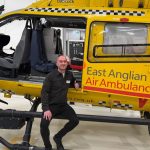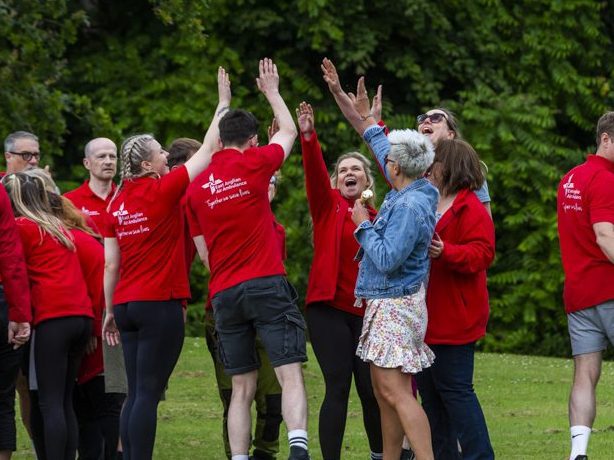16 Dec 2024
Responding during darkness with the help of Night Vision technology
Last year, 1,125 of 2,956 emergencies EAAA crews were tasked to were during our night shift (7pm – 7am). The arrival of the winter months means that EAAA crews will be responding to medical emergencies when there are more hours of darkness. Operating at night brings additional considerations and processes so, as we approach the shortest day, learn more about night vision technology, which is used by the crew when flying to medical emergencies after the sun has set.
Flying at night presents many more risks than flying in daylight. All pilots with EAAA are trained to use night vision equipment to make hazards and obstacles easier to identify by amplifying the ambient visible light the crew would normally see. This helps to keep crew, patients and bystanders safe.
Our helicopters are fitted with a Night Vision Imaging System (NVIS): A system that integrates all elements necessary to successfully and safely operate with Night Vision Goggles (NVGs). The system includes NVGs, NVIS compatible lighting and other components, such as the High Intensity Search Lights (HISL). The searchlight also has an infra-red filter, which is visible to the crew’s night vision equipment, but not to the naked eye.
The NVGs are at the centre of the NVIS: They look like binoculars that are worn by our pilots on their helmets. They do the clever work to take low light levels, amplify and clean the image and present it to the pilots. The NVGs enhance the flight crew’s ability to maintain visual reference to the surface at night.
In the rear of the aircraft, EAAA clinicians also play their part. The doctors and critical care paramedics use handheld monoculars that use the same technology as the pilot’s NVGs to support the pilots in identifying hazards, particularly during landing and take-off.
During the day, the crew aim to lift within three to four minutes. At night, it’s best endeavours and is usually within ten to twelve minutes to account for the extra planning and safety considerations that night taskings entail.
EAAA has been flying at night since May 2013. EAAA was the first air ambulance in the country to attend Helicopter Emergency Medical Service (HEMS) incidents in the hours of darkness to unknown and unlit sites. We began flying 24/7 from Norwich in June 2021.
This is possible thanks to the generous support from the public, whose kindness enables EAAA to respond 24/7 to advanced skills, equipment and medicine – normally only found in a specialist emergency department – directly to the patient’s side in the fastest time possible.








